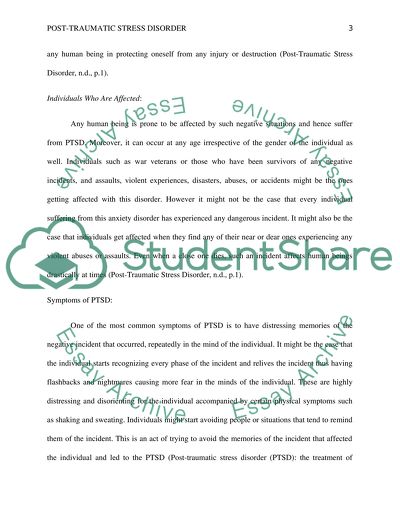Cite this document
(“Post-Traumatic Stress Disorder Research Paper Example | Topics and Well Written Essays - 1250 words”, n.d.)
Retrieved from https://studentshare.org/psychology/1492458-post-traumatic-stress-disorder
Retrieved from https://studentshare.org/psychology/1492458-post-traumatic-stress-disorder
(Post-Traumatic Stress Disorder Research Paper Example | Topics and Well Written Essays - 1250 Words)
https://studentshare.org/psychology/1492458-post-traumatic-stress-disorder.
https://studentshare.org/psychology/1492458-post-traumatic-stress-disorder.
“Post-Traumatic Stress Disorder Research Paper Example | Topics and Well Written Essays - 1250 Words”, n.d. https://studentshare.org/psychology/1492458-post-traumatic-stress-disorder.


